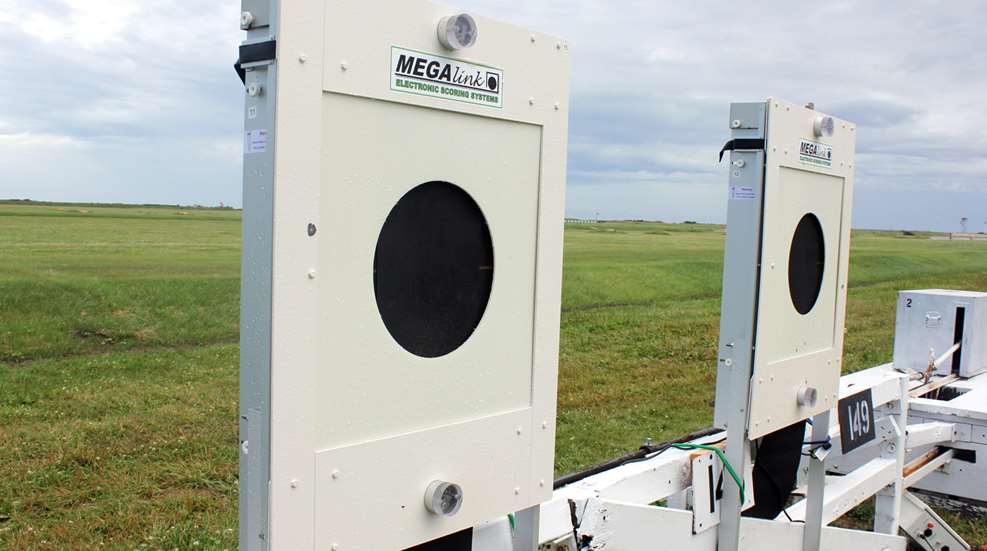
What those two statements have in common is that the respective futures of the Venerable Mr. Greener and My Humble Self have rendered each of them incorrect. For Mr. Greener, advancements in firearms and cartridge development made the competition muzzleloader hopelessly anachronistic; in my case, the application of digital technology to targets means everyone behind the firing line—and online—can now follow shot-to-shot scoring in real time.
E-trust
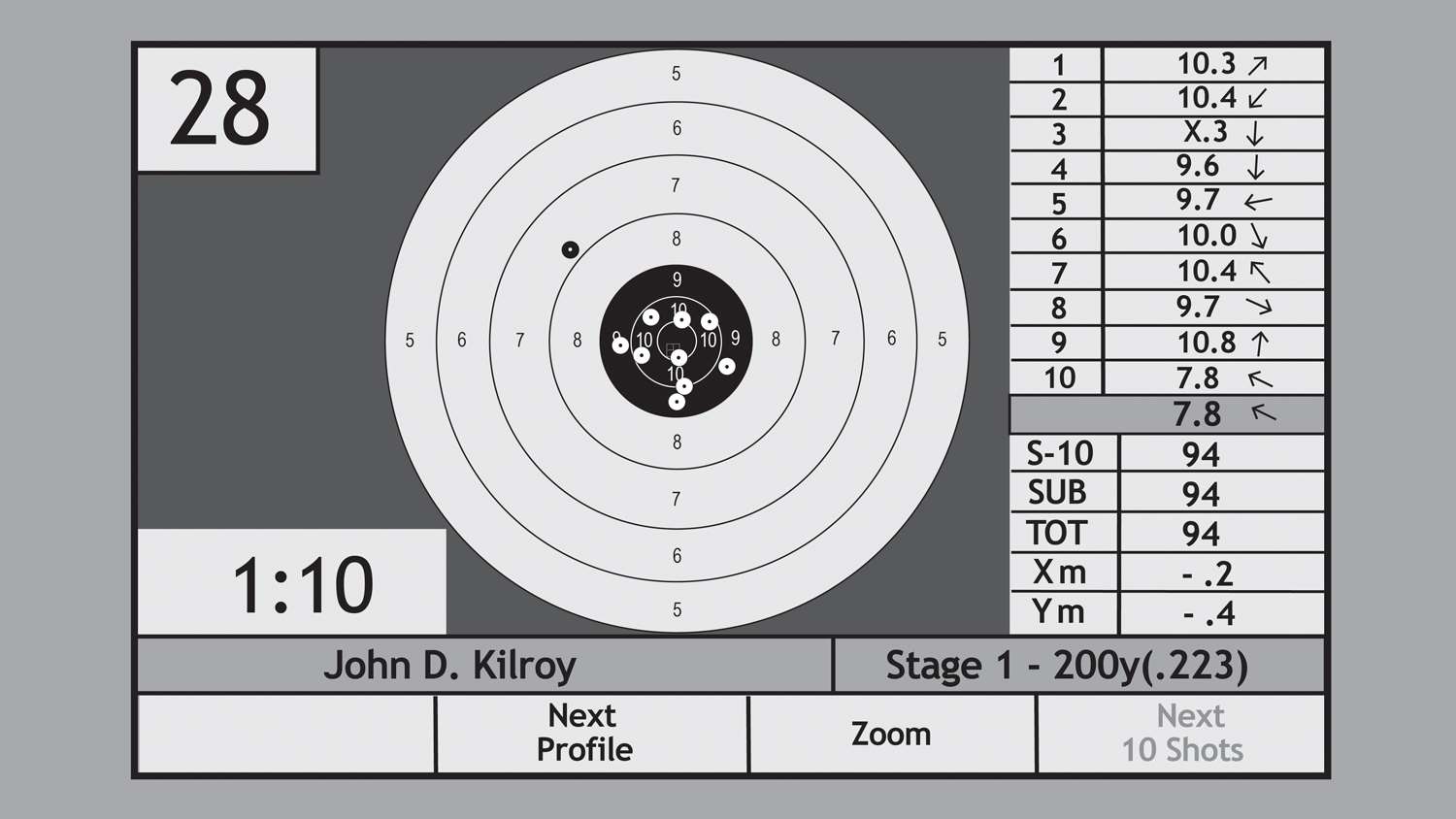
However, e-targets aren’t as complex as smartphones so there’s less to go wrong; there are plenty of positives to tip the scales in their favor, and we’ll detail those pros and cons shortly. First, let’s see how they work.
Starting small
Compared to shooting outdoors with larger calibers, indoor air rifle shooting puts smaller demands on electronic scoring targets. Sensor areas—the area of the target able to register a shot—can be smaller, and there are no outdoors environmental factors to interfere with pellet impact registration.
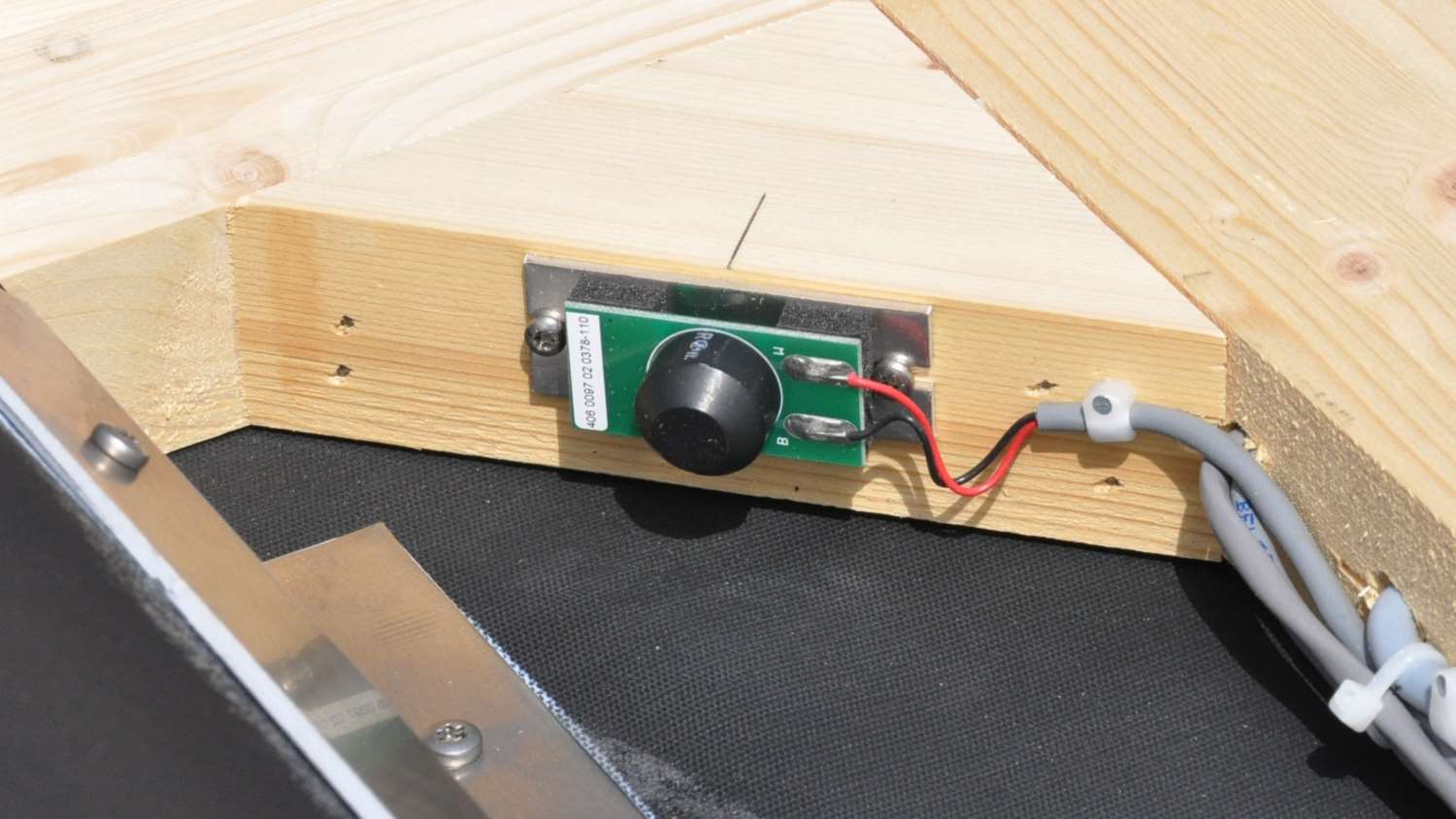
Light and sound
The Elite Scorer works on the “open sensor” principle in which the target face itself acts as the impact sensor. Open sensors don’t work as well outdoors because bullets must impact the face at precisely 90 degrees to register accurately. Targets set a few degrees left, right, higher or lower than the shooter’s position, or target frames swaying or twisting slightly in a breeze will induce errors in shot recording.
Outdoor electronic scoring targets use either light or sound to plot the location of a bullet impact. In 2010, Swiss company Sius Ascor introduced an e-target using lasers to triangulate the position of a bullet strike. The 2016 Olympics featured Sius targets exclusively, and the company landed a contract to provide their targets, including laser targets, through the 2020 Olympics.
Laser target systems are comparatively new—acoustic systems have been around since the 1970s, the technology has been continuously refined and so they are the e-target of choice. Acoustic scoring targets sense the Mach wave of a passing bullet to triangulate its position. The target is not a flat plane like traditional paper targets, rather it is a three dimensional box, the interior of which acts as an acoustic (or “echo”) chamber. Imagine building a square frame of two-by-fours and attaching a white foam face to the front and back, and you’ve got the basic idea. The foam front of the box has a circular cutout the size of the scoring black on whatever target is in use—say, the 13-inch black of an NRA SR 200-yard high power rifle target. A black rubber mat hanging inside the box provides the black area the shooter sees and a second mat and foam surface at the back closes the acoustic chamber. There are no visible scoring rings, just an unbroken white surface surrounding a black center.
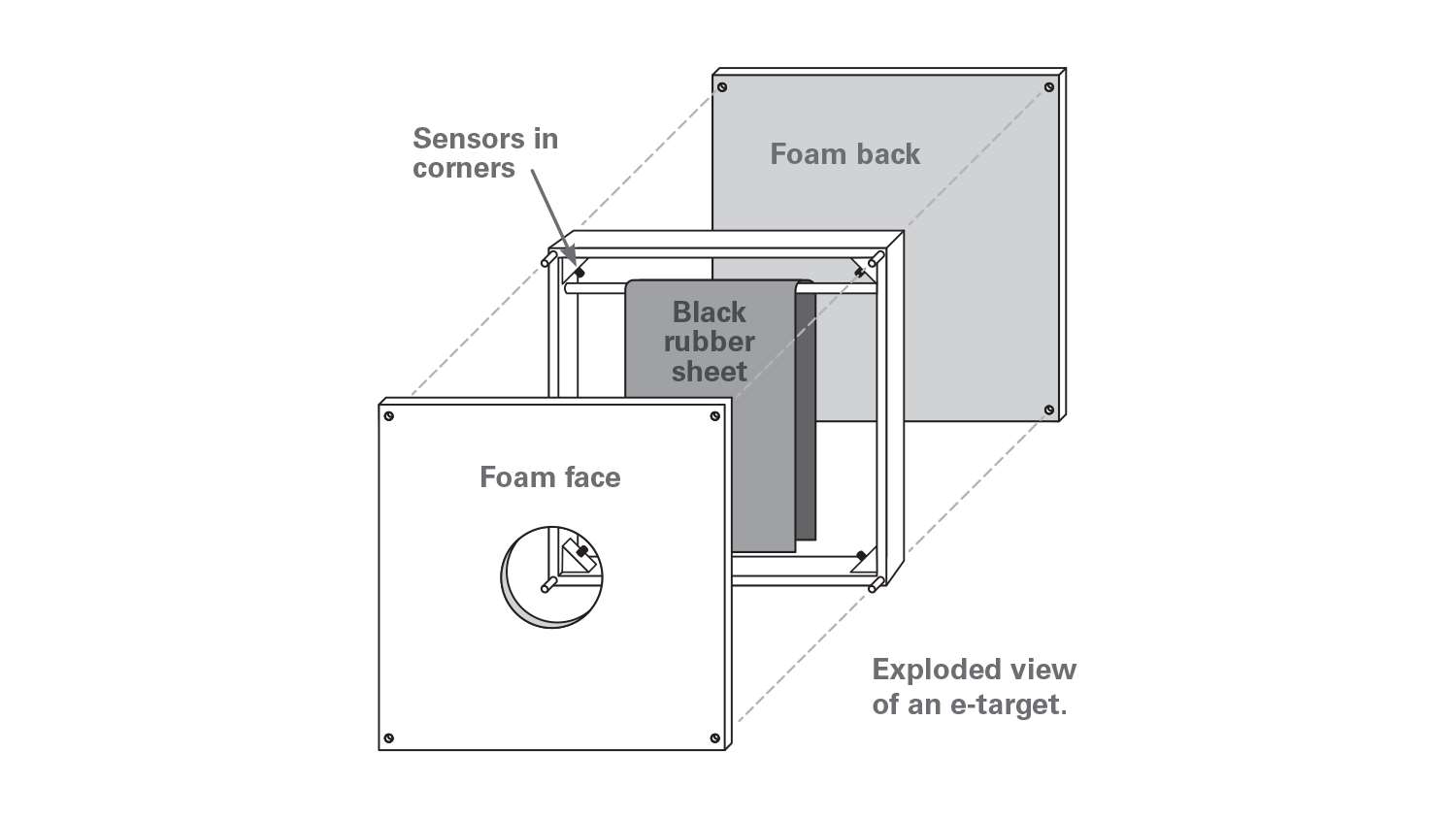
When a bullet strikes the rubber mat, the initial Mach wave stops there and the bullet generates a new wave upon penetrating the acoustic chamber (bullets don’t have to be supersonic). Individual acoustic sensors, usually three along the bottom or one in each of the four corners of the echo chamber, send a signal wirelessly or via cable to a central processor/computer when it detects the shock wave. Because the speed of the shock wave (the speed of sound) varies with air temperature, the sensor array also sends temperature data for calculations (the foam front and back act as temperature insulators). The bullet’s shock wave first strikes the sensor(s) closest to it, and milliseconds later registers with the sensors further away. The computer measures the time difference in the arrival of the shock wave at the individual sensors and plots it on an image of a target face. Accurate shot-plotting can be remarkable—the Kongsberg Target Systems’ accuracy is 0.025-inch at 1000 yards.
The shooter’s monitor is provided by the hosting range, or it might be your own cellphone or tablet with the appropriate app. And it’s just as easy to send the image to the internet for your friends to cheer your 10-ring prowess—or tut-tut a thrown shot—as well.
Changing the 200 yard high power target to the larger black of 300 and 600 yard targets is as simple as hand-turning a large plastic nut at the target corners, lifting off the foam material face, and replacing it with one sporting the appropriate diameter hole. Software automatically compensates for different size scoring rings on the ring-less acoustic targets. When shooting reduced 200, 300 and 600 yard targets at 100 yards, changing targets takes the tap of a finger—no delays for stapling up three different targets, and from match start to finish no competitor ever needs to move forward of the firing line.
From the iron sight shooter’s perspective what differs is that the target is a higher-contrast black-on-white rather than black-on-beige, and the shooter looks at an electronic display—instead of through a spotting scope. What used to be the human scorer still functions as a safety observer responding to range commands.
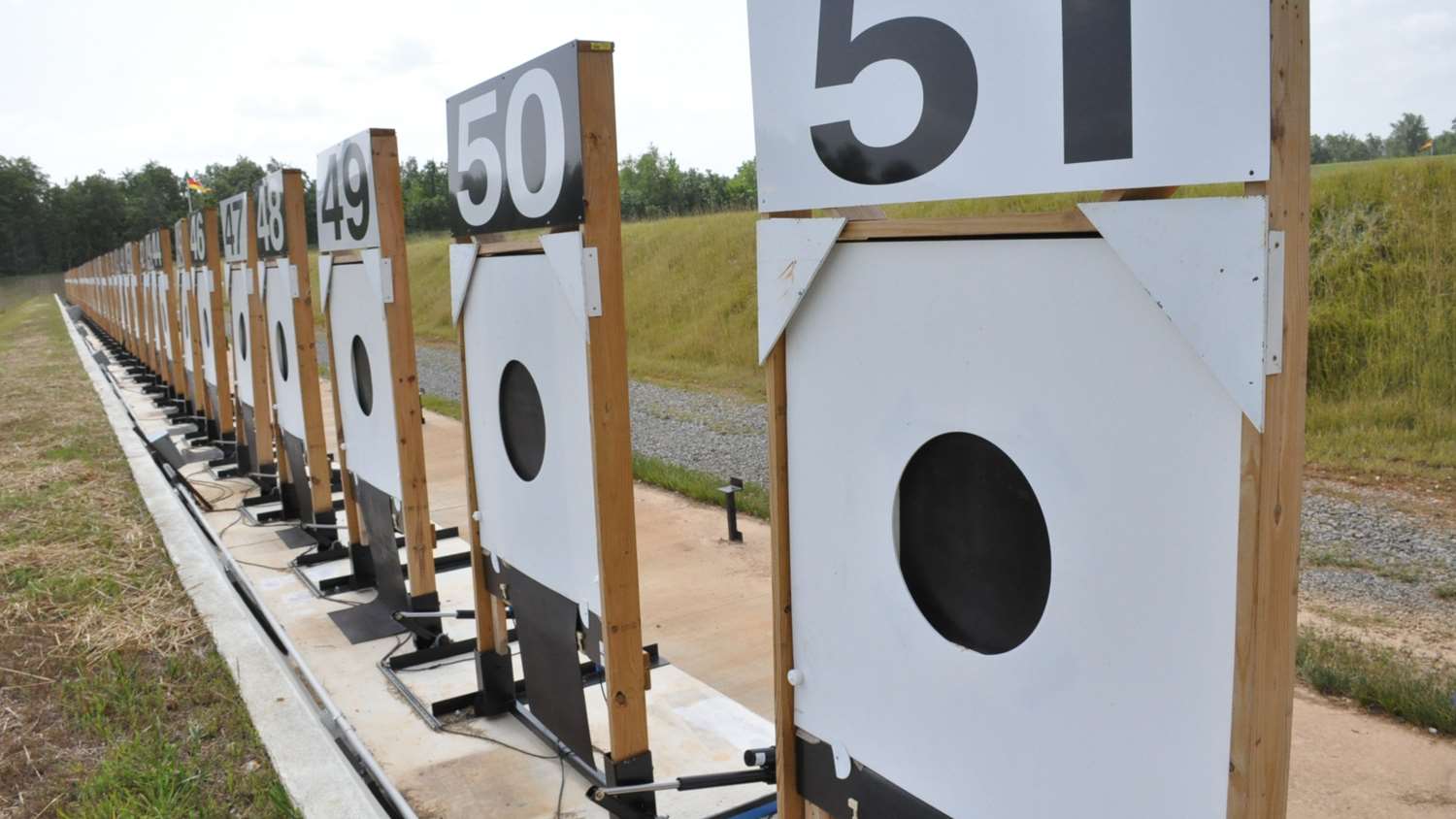
Tradeoffs and rabbits
E-targets eliminate pit duty, which might be a positive or a negative. While some competitors accept and even enjoy target pulling as part of the game, it does take a significant amount of time, whereas just a couple of workers in the pits can change e-target faces in minutes. In other competitions, changing targets consists of tapping a button at your lane. That equates to a lot more time and focus spent on shooting rather than on target duties.
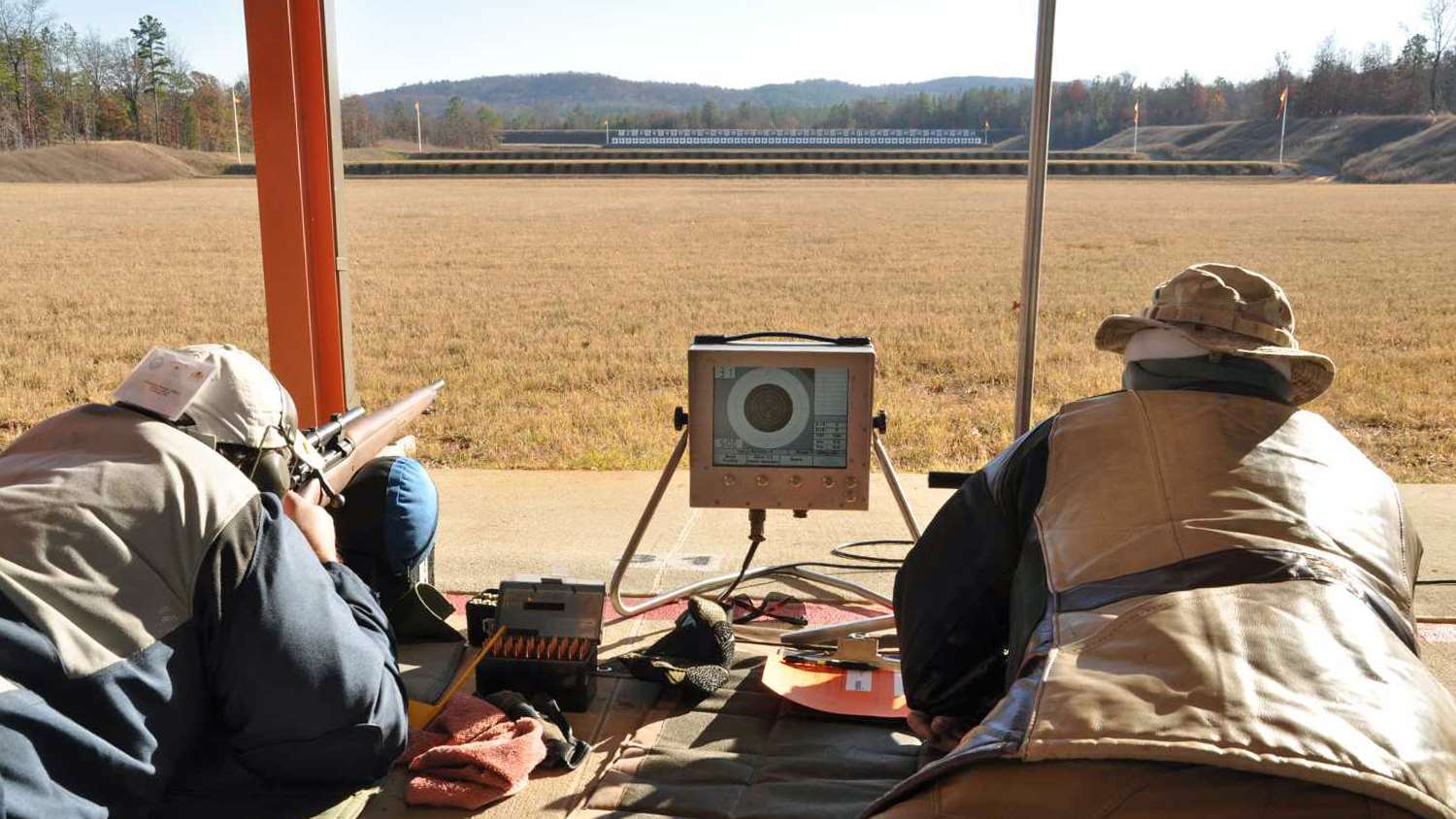
Errant bullet strikes on wiring, cabling or sensors will disable the target system (so will a rabbit gnawing on wiring—it’s happened). Especially for wireless systems, lightning in the area can interfere with data transmission, as could other strong sources of electromagnetic energy. Any failure in electrical service will, obviously, preclude or end a match.
Scope shooters no longer have scoring rings to reference when looking through their riflescopes. That lack of ring reference might also affect some shooters who use mirage at the target for wind doping. For some long-time competitors there might be a slight relearning curve with e-targets.
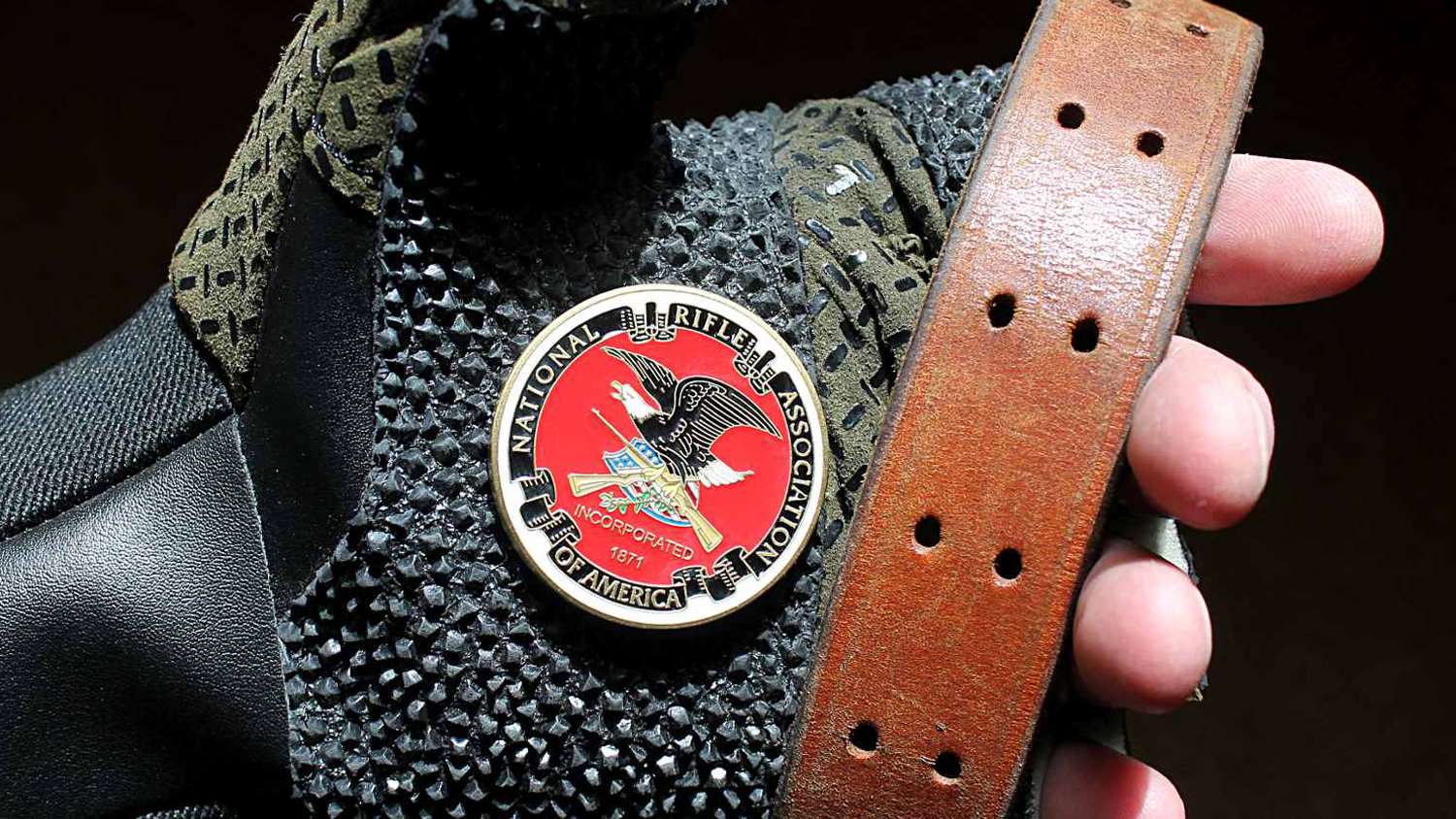
A negative harder to quantify is a perceived loss of tradition. No pit duty, no challenge coins, no slow target service alibi, and the sense that digital technology supplants human participation in competition. But the reluctant traditionalist can take succor from the high cost of e-target systems compared to cheap paper and glue. Multiple firing point systems for outdoor ranges are expensive, on the order of $2,500 for each point. Options such as shielded cabling to prevent signal interference, as well as maintenance, raises costs further. Replacing bullet-chewed foam and matting costs more than cardboard, too.
E-targets aren’t likely to replace paper targets with the same rapidity that cell phones and email completely dominated our communications, and smaller clubs may not afford them at all. But they are here. Back in 2015, CMP installed three banks of high power e-targets at the then brand-new Talladega Marksmanship Park in Alabama, where more than 22,000 shooters since then have worked out bugs to improve e-target performance for U.S.-style shooting.
Got bleachers?
American shooters widely adopting e-targets is more evolution than revolution, but those in the know that I spoke with at both NRA and CMP independently said they believed the many advantages of e-targets makes them inevitable for formal competitions here. This same impetus saw the breechloader eventually replace Greener’s muzzleloader in competition, with the difference being that e-targets will not supplant traditional targets, but instead will augment them.
Today, instant gratification is the expectation, and so we never see shooting ranges with bleachers behind our firing lines. With their ability to instantly display on a scoreboard the shots of every shooter, will e-target systems bring back the crowds?
Few would disagree that anything that increases the popularity and participation in our shooting sports is a good thing.
Editor’s Note: The market for e-targets is expanding rapidly. Some additional reading:
- HEXTA Long-Range Electronic Target
- E-Targets at 2016 NRA F-Class Championships
- Oakwood H-Bar LOMAH E-Target
Photos courtesy of CMP.

































